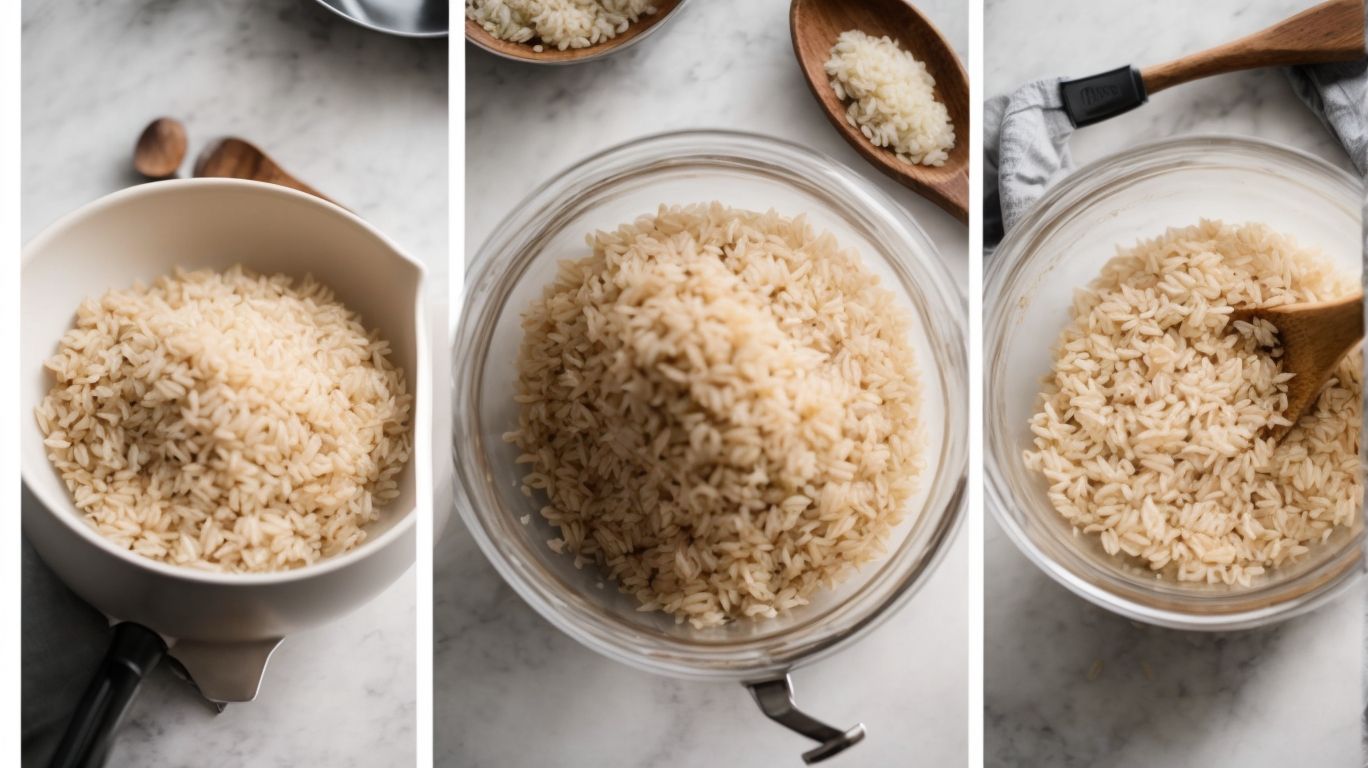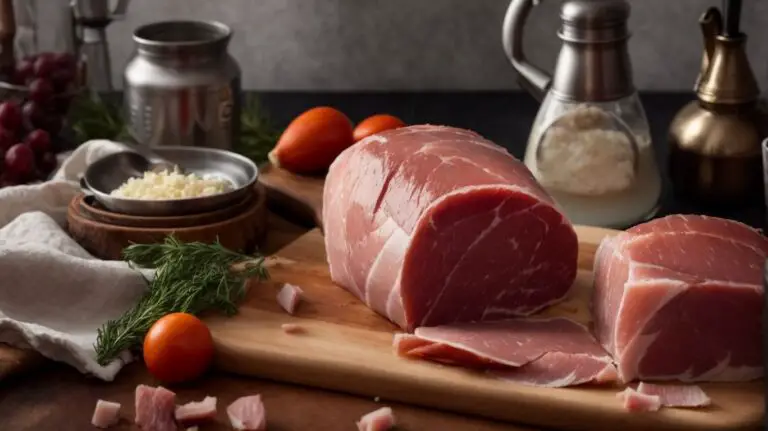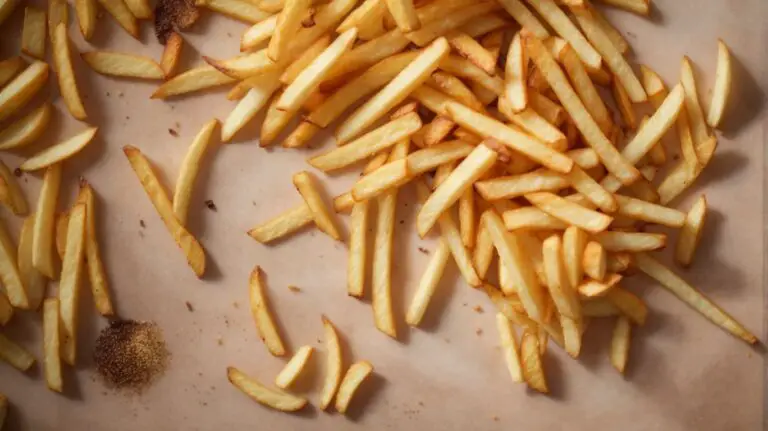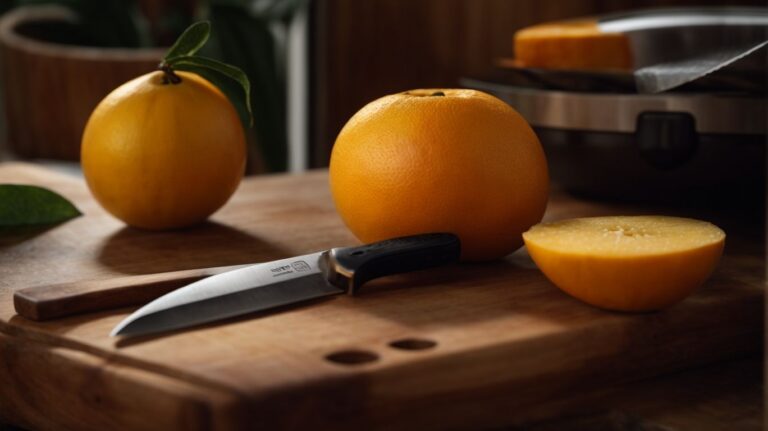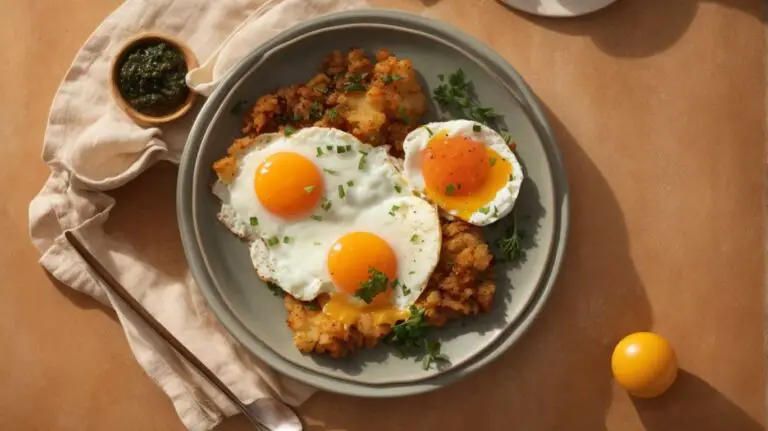How to Cook Brown Rice?
Looking to incorporate a healthy and delicious grain into your meals? Consider brown rice!
We explore the nutritional benefits of brown rice and why you should add it to your diet. We also provide step-by-step instructions on how to cook brown rice on the stove and in a rice cooker.
Whether you’re a seasoned chef or a beginner in the kitchen, cooking brown rice has never been easier. Stay tuned to learn more!
Key Takeaways:
What is Brown Rice?
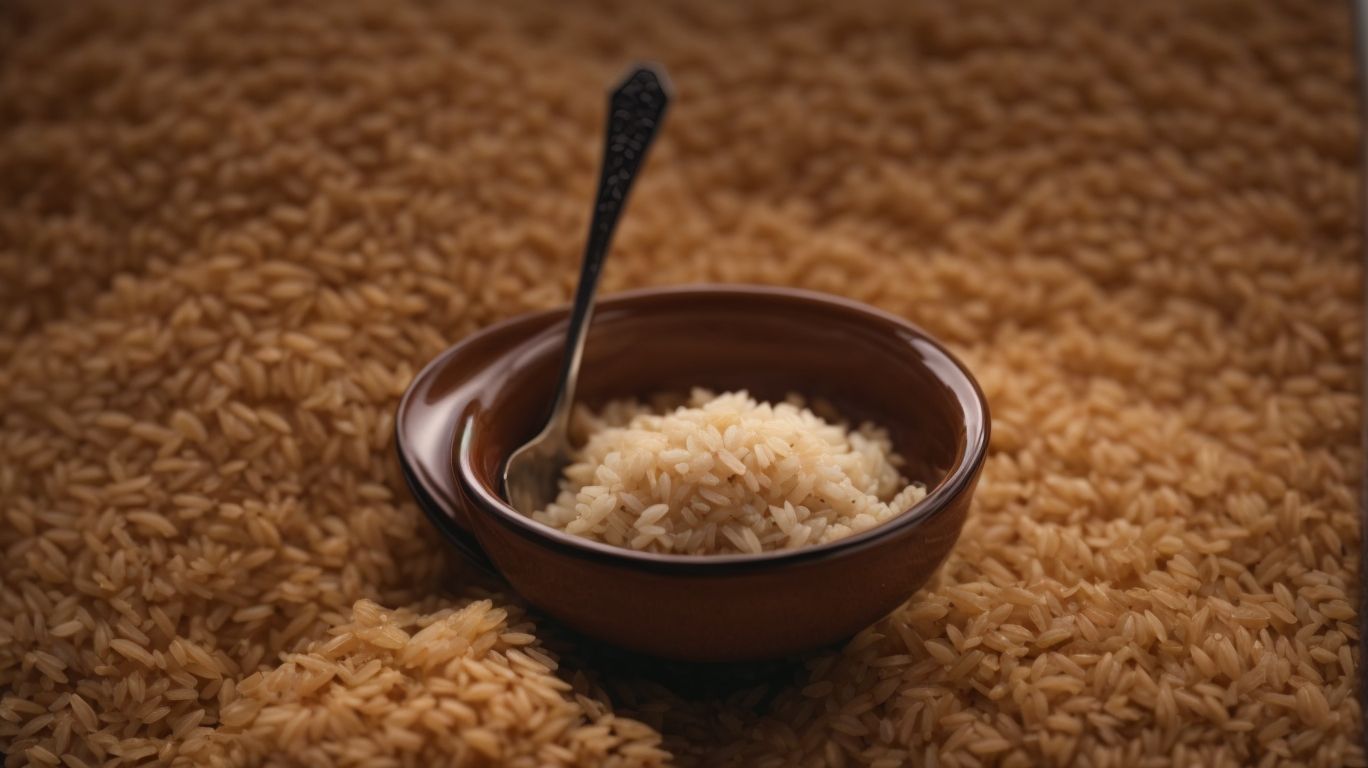
Credits: Poormet.Com – Eugene Roberts
Brown rice is a whole grain rice that is known for its health benefits and rich nutrient content.
Whole grain brown rice retains its bran and germ layers, which are packed with fiber, antioxidants, and essential vitamins and minerals needed for optimal health. Its high fiber content aids in digestion, promotes satiety, and helps regulate blood sugar levels. Brown rice is a good source of B vitamins, magnesium, and selenium, which support energy production, bone health, and immune function.
Incorporating brown rice into a balanced diet can enhance overall health by promoting heart health, supporting weight management, and reducing the risk of chronic diseases such as diabetes and certain cancers. Its versatility allows it to be used in a variety of dishes, making it a delicious and nutritious staple in any meal plan.
What Are the Nutritional Benefits of Brown Rice?
Brown rice is a nutritional powerhouse, packed with fiber and essential nutrients that contribute to a healthy diet.
One of the key nutritional benefits of brown rice is its high fiber content, which aids digestion and helps maintain a healthy weight. Brown rice is a rich source of essential nutrients such as manganese, selenium, and magnesium, which play crucial roles in supporting overall health.
These nutrients are important for various bodily functions, including bone health, energy production, and immune system support. By incorporating brown rice into your meals, you can enhance your diet with these vital nutrients and promote optimal health and well-being.
Why Should You Cook Brown Rice?
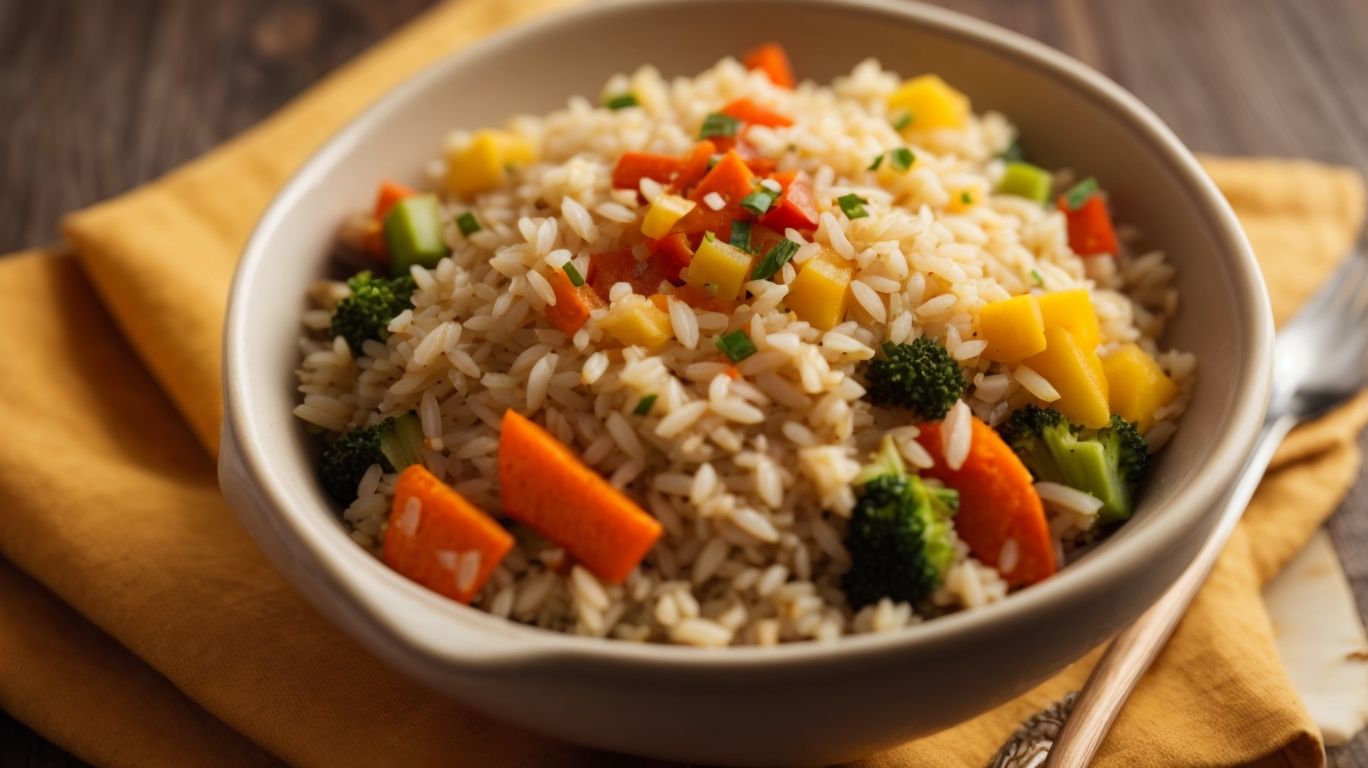
Credits: Poormet.Com – Ryan Young
Cooking brown rice is not only a culinary delight but also a smart choice for health-conscious individuals, given its numerous health benefits.
One of the main reasons why brown rice is a healthier alternative to white rice is its higher fiber content. The fiber in brown rice helps regulate digestion, lower cholesterol levels, and manage blood sugar levels, making it an excellent choice for individuals looking to improve their overall health. Brown rice is rich in essential nutrients such as manganese, selenium, and antioxidants, which support a strong immune system and provide protection against chronic diseases.
How to Cook Brown Rice on the Stove
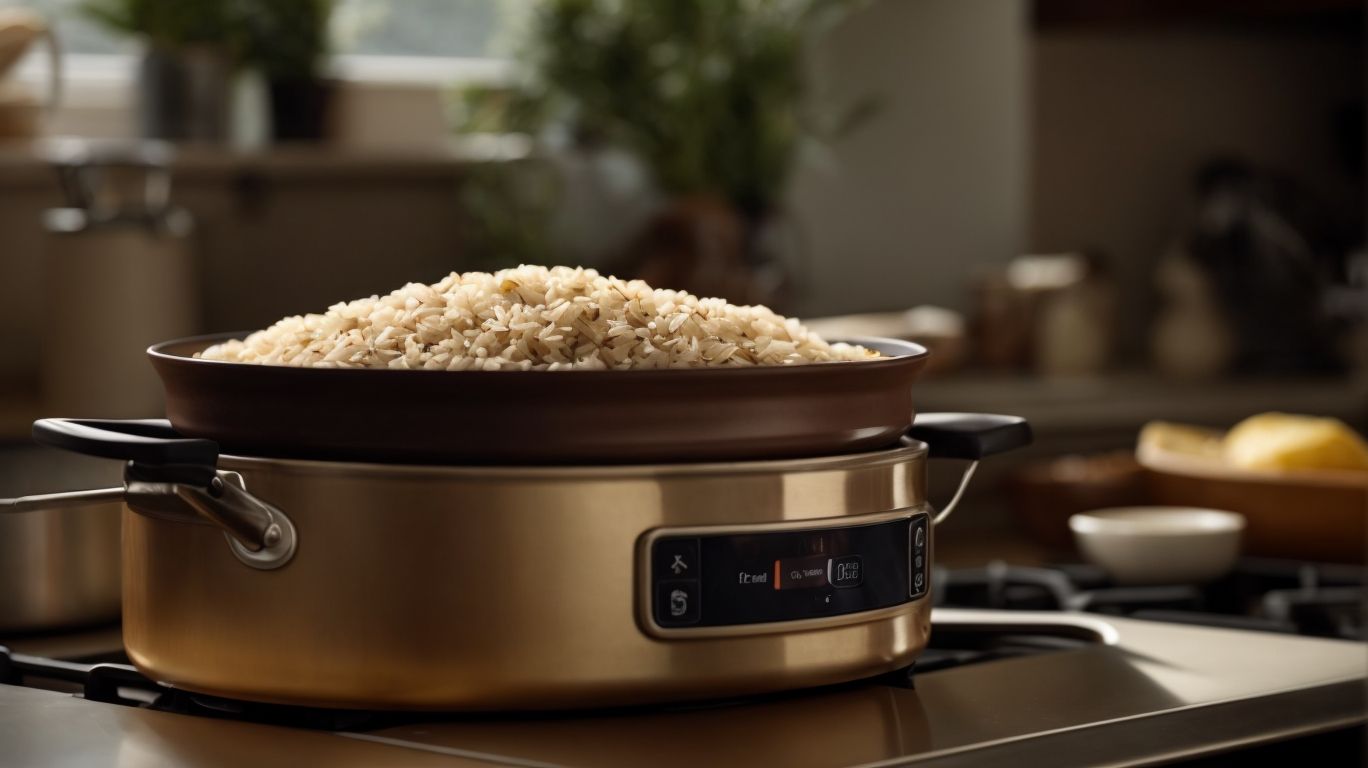
Credits: Poormet.Com – Christian Martin
Cooking brown rice on the stove is a simple and essential cooking method that requires a pot, water, and precise instructions to achieve perfect results.
Start by rinsing the brown rice under cold water to remove excess starch which can lead to a sticky texture. The ratio of water to rice is crucial; typically, for every cup of rice, add 1 ¾ cups of water. Bring the water to a boil, then reduce the heat to low, cover with a tight-fitting lid, and simmer for about 45 minutes. Avoid lifting the lid during cooking to ensure the steam remains inside, resulting in fluffy grains. Once done, let it sit off the heat for 10 minutes before fluffing with a fork to achieve the perfect texture.
Step 1: Rinse the Rice
Rinsing brown rice is the first crucial step to remove excess starch and ensure the water runs clear before cooking.
When rice is harvested, it is covered in a layer of starch that can make the cooked grains sticky or mushy if not properly rinsed. To start, place the brown rice in a fine mesh strainer and rinse it under cold running water. Swirl the rice with your fingers to help release the starch. Repeat this process until the water runs clear, indicating that most of the excess starch has been removed. This simple yet vital step not only improves the texture and separation of the grains but also enhances the overall taste of the cooked brown rice.
Step 2: Measure the Rice and Water
Accurately measuring both the brown rice and water ratios is key to achieving the perfect texture and flavor in the cooked rice.
When cooking brown rice on the stovetop, the general rule of thumb is to use a ratio of 1 cup of brown rice to 2 1/2 cups of water. This may vary slightly depending on the type of brown rice being used. Short-grain brown rice may require a bit more water, while long-grain brown rice may need a bit less to achieve that ideal fluffy texture.
Step 3: Bring Water to a Boil
Bringing water to a vigorous boil on the stovetop is the next step in preparing brown rice for cooking.
Once you have measured the appropriate amount of water based on the rice-to-water ratio, place a pot on the stovetop over high heat. As the water heats up, tiny bubbles will start forming on the bottom and sides of the pot. It is crucial to wait until these bubbles become larger and more frequent, indicating a rolling boil. Achieving a vigorous boil is essential for properly cooking brown rice, as it helps the rice grains to absorb the water evenly and thoroughly, resulting in a perfect texture and consistency.
Step 4: Add Rice to Boiling Water
Adding the rinsed brown rice to the boiling water is a critical step in the stovetop cooking process, ensuring even cooking and absorption.
When you add the brown rice to boiling water, make sure to stir it initially to prevent clumping and ensure all grains are submerged.
- Allow the rice to simmer on low heat, covered with a lid, to trap steam and aid in uniform cooking and absorption. This gentle cooking process helps the rice absorb the water gradually, leading to perfectly cooked grains.
Resist the temptation to open the lid frequently, as it disrupts the steam buildup crucial for proper cooking. Patience during this stage results in fluffy, separate grains with a delightful texture.
Step 5: Cover and Simmer
Covering the pot and allowing the brown rice to simmer gently is essential to achieve a tender and fluffy texture.
Simmering brown rice ensures that it cooks evenly and absorbs the flavors of any accompanying ingredients. When the pot is covered, it traps steam and heat, enabling the rice to soften gradually without becoming mushy.
Simmering is a gentle cooking method that maintains a low and steady temperature, preventing the rice from overcooking or sticking to the bottom of the pot. Covering the pot also helps to retain moisture, preserving the natural starches in the grains and resulting in that ideal light, separate grain texture.
Step 6: Let it Rest
Letting the cooked brown rice rest off the heat and then fluffing it with a fork helps to ensure the perfect texture and separation of grains.
After cooking, remove the pot from the heat source and let the rice sit covered for about 5-10 minutes. This resting period allows the residual heat to evenly distribute within the rice, finishing the cooking process gently and uniformly. Fluffing the rice with a fork post-resting is crucial to separate the grains without crushing them. Gently insert the fork into the rice and fluff by lifting and turning the grains, ensuring a light and airy texture. This essential step guarantees each spoonful of the cooked brown rice is perfectly fluffy and distinct in every bite.
How to Cook Brown Rice in a Rice Cooker
Cooking brown rice in a rice cooker is a convenient and efficient method that requires precise measurement and the simple step of turning on the rice cooker.
When preparing to cook brown rice, start by measuring the desired amount of rice using a measuring cup. A standard ratio for brown rice is usually 1 cup of rice to 2 cups of water. Place the rice in a fine-mesh strainer and rinse under cold water until the water runs clear. This helps remove excess starch for fluffier rice.
After rinsing, add the rinsed rice to the rice cooker pot and pour in the appropriate amount of water. Close the lid securely and select the brown rice setting on your rice cooker. Allow the rice to cook until the cooker indicates it’s done.
Step 1: Rinse the Rice
The initial step in cooking brown rice in a rice cooker involves rinsing the rice thoroughly to remove excess starch and ensure clear water runs.
Rinsing the brown rice is crucial as it helps eliminate dust, debris, and any unwanted particles that might affect the taste and texture of the cooked rice. By rinsing the rice multiple times under cool running water, the cloudy water gradually turns clearer, indicating the removal of surface starch. This process not only enhances the flavor but also prevents the rice from becoming overly sticky or mushy during cooking. Properly rinsed brown rice allows for individual grains to cook evenly and results in a light, fluffy texture that is perfect for various dishes.
Step 2: Measure the Rice and Water
Accurately measuring the brown rice and water ratios for the rice cooker is crucial to achieving perfectly cooked rice with the right texture.
For optimal results, a common ratio for cooking brown rice in a rice cooker is 2 cups of water to 1 cup of brown rice. This proportion ensures that the rice absorbs just the right amount of water to cook evenly and maintain its desired consistency. The accurate measurement of these ingredients is key to preventing the rice from turning out too mushy or undercooked. Remember, the rice cooker relies on this precise balance of rice and water to produce a flavorful and fluffy batch of brown rice.
Step 3: Add Rice and Water to Rice Cooker
Adding the rinsed brown rice and measured water to the rice cooker is the next step in the cooking process to prepare delicious and fluffy rice.
After rinsing the brown rice to remove excess starch, measure the appropriate amount of water according to the rice-to-water ratio specified in the cooker’s manual.
This ratio typically ranges from 1:1 to 1:2 depending on the type of brown rice being cooked.
Next, pour the washed rice gently into the inner pot of the rice cooker, ensuring an even spread.
Following this, carefully add the measured water to the pot.
It’s crucial not to stir the rice and water once they are combined to prevent disrupting the cooking process.
Step 4: Turn on Rice Cooker
Turning on the rice cooker after adding the ingredients initiates the cooking process that will result in perfectly cooked brown rice ready to be enjoyed.
Once you have carefully measured the brown rice and added the appropriate amount of water, you simply need to close the lid securely and press the power button on the rice cooker. The device will automatically adjust the cooking time and temperature to ensure the brown rice is cooked to perfection. This hands-off approach saves you time and effort, allowing you to focus on other tasks while your rice cooker takes care of the rest.
Step 5: Let it Rest
Allowing the cooked brown rice to rest in the rice cooker for a few minutes post-cooking helps in enhancing the texture and flavor before serving.
When the rice continues to sit in the rice cooker, it goes through a residual heat absorption process, ensuring that each grain absorbs moisture evenly, resulting in a fluffier and more consistent texture.
This resting period also allows the flavors to meld together, creating a more cohesive and delicious taste profile in every bite.
By giving the rice some time to settle, any excess moisture is redistributed, eliminating any potential sogginess and yielding a perfectly cooked, restaurant-quality dish.
Frequently Asked Questions
How to Cook Brown Rice?
1. What is the best method for cooking brown rice?
The best method for cooking brown rice is to use the stovetop method. This involves bringing the rice and water to a boil, then reducing the heat and letting it simmer for about 45 minutes.
2. Can I use a rice cooker to cook brown rice?
Yes, you can use a rice cooker to cook brown rice. Simply follow the same ratio of 2:1 water to rice and select the brown rice setting on your rice cooker.
3. How do I ensure my brown rice doesn’t stick to the pan?
To prevent your brown rice from sticking to the pan, make sure to rinse it before cooking. This removes excess starch that can cause sticking. You can also add a tablespoon of oil to the water while cooking.
4. How can I add more flavor to my brown rice?
You can add more flavor to your brown rice by cooking it in broth instead of water. You can also add herbs, spices, or chopped vegetables while cooking to infuse more flavor.
5. Is it necessary to soak brown rice before cooking?
Soaking brown rice before cooking can help reduce the cooking time and make it easier to digest. However, it is not necessary and the rice will still cook well without soaking.
6. Can I freeze cooked brown rice?
Yes, you can freeze cooked brown rice. Let it cool completely, then store it in an airtight container or freezer bag. It can be kept in the freezer for up to 6 months. To reheat, simply thaw and microwave or heat on the stovetop.

